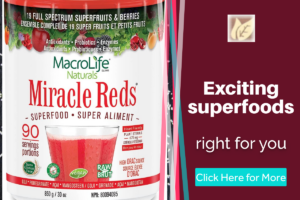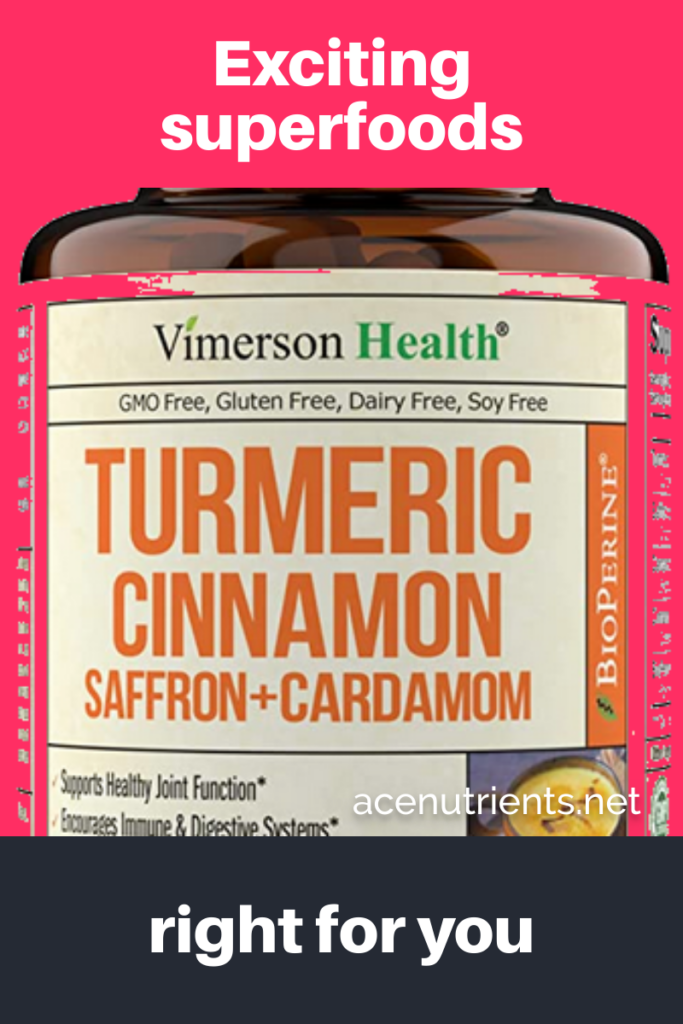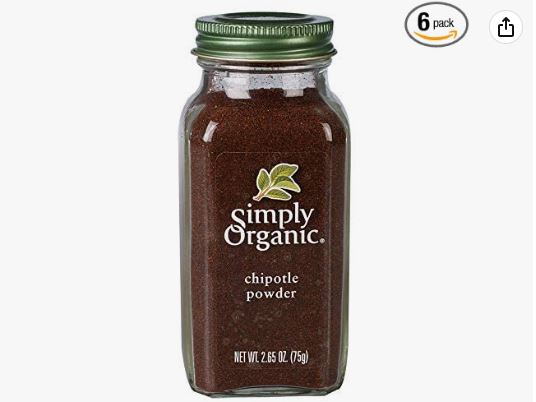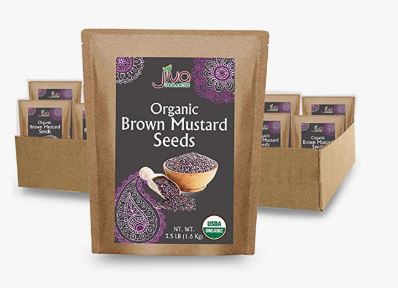
We believe that the most exciting superfoods right for you are certified organic, non-GMO, and raw if possible. Exciting superfoods, hot off the presses. But should you eat avocados, chia seeds, or cacao nibs? Antioxidants.
Omega fatty acids. Fiber. What makes superfoods so exciting? We’ve all heard the benefits. Rehydrate with coconut water. Munch on chia seeds. Splurge on dark chocolate. But what exactly are superfoods? And, more importantly, are there ones that are particularly good for YOU?
Superfoods are foods that have a high nutritional value and contain many nutrients. They can be found in all parts of our food chain, from plants to animals to fish. Some superfoods include:
Blueberries are in the category of exciting superfoods right for you.
Are loaded with antioxidants which help protect your body against free radicals. Fiber and vitamins A & C. Blueberries have been shown to help lower cholesterol levels in the blood.
The antioxidant properties of blueberries may also protect against heart disease by helping prevent LDL cholesterol from oxidizing into plaque on artery walls.
Eating one cup of fresh or frozen blueberries every day can lower your risk of stroke and coronary heart disease, according to studies.
Antioxidants also reduce inflammation, so blueberries could help prevent or treat arthritis.
Broccoli
Is packed full of vitamins A & K as well as fiber and folic acid.
It also contains a good amount of vitamin C, which is great if your diet isn’t very healthy.
You can eat it raw or cooked in many ways.
I like to steam broccoli with some garlic butter on top. It makes the flavor even better!
Cauliflower
is a veggie that has more than twice the potassium that bananas have.
Cauliflower is a good source of vitamin B6, folate and potassium.
Green beans
they’re high in iron, manganese and magnesium.
They also contain a good amount of vitamin C which is great if your diet isn’t very healthy.
You can eat them raw or cooked – they taste best when steamed with some garlic butter.
Green peppers
These are packed full of vitamins A & B6, as well as potassium. They have an amazing flavor too!
If you like spicy food, then these will be perfect for you. You could add them to salads or pasta dishes.
Cucumbers
Lentils — are rich in protein, calcium, phosphorus and zinc. They also contain the antioxidant lutein, which is thought to help protect against macular degeneration.
The best superfoods are those that contain a wide variety of nutrients, including vitamins and minerals. They also provide fiber to help keep your digestive system healthy.
Superfoods can be found in various forms, including fruits, vegetables, supplements like vitamin C or fish oil, herbs and spices, and beverages like green tea.
Eating these regularly throughout the day may be easier for some people than taking a supplement every morning.
What superfoods should you eat everyday?
The best superfoods are the ones that contain a combination of nutrients and antioxidants. They’re also low in calories, so they won’t make your waistline expand like other foods can! Here’s what to eat if you want to lose weight fast:
Blueberries have been shown to help lower cholesterol levels and reduce inflammation throughout the body.
Are Superfoods actually good for you
or are they just a fad?
Let’s find out.
Superfoods, the latest craze in nutrition, is all about eating foods that will make us healthier and happier.
But what exactly do we mean by superfoods?
Well, there are many types of food that can be considered as superfoods.
The best superfoods are the ones that have been shown to be beneficial in studies. These foods contain a wide variety of nutrients and antioxidants, which can help prevent disease or slow down its progression if it has already begun. Superfoods also provide energy without causing weight gain. They may even improve your mood!
They contain nutrients and minerals which help in maintaining a healthy body, mind and soul. Superfoods can also improve your overall well-being by helping with weight loss or preventing diseases like cancer. The following list of foods is made up of some of the most nutritious food items on earth. These include fruits, vegetables, grains, nuts, seeds, herbs and spices.
They also have high levels of antioxidants to help protect your body from free radicals which can cause damage to cells in our bodies. Superfoods provide us with energy as well as essential amino acids such as protein, iron, zinc, calcium, magnesium and B-complex vitamins like vitamin C, E and folic acid. Some foods even offer protection against cancer or heart disease.
What are the top 7 superfoods?
The list of super foods is long and ever-growing.
But what makes a food or drink “Super”?
Well, it’s all about nutrients!
Nutrients help your body to function properly.
They’re also essential in building strong bones, muscles, skin, hair, nails, teeth…
and even our brains!
So if we want to be healthy, then we need to eat lots of nutritious foods.
And that means eating plenty of fruits and vegetables.
1. Fruits
Best sources of antioxidants. Antioxidants help protect your body from free radicals, which can cause damage to cells and DNA. Free radical damage is linked with cancer, heart disease, diabetes, arthritis, Alzheimer’s disease, cataracts, macular degeneration, aging skin, premature wrinkling, and other conditions. The more fruits and veggies you eat, the better off you will be!
Antioxidant-rich foods include:
• Berries, such as blueberries and strawberries. They are loaded with antioxidants that help fight free radicals in the body. Antioxidants also protect against cancer-causing substances called carcinogens.
2. Vegetables
Dark green vegetables like broccoli, kale, collard greens, bok choy and Brussels sprouts.
These contain lutein and zeaxanthin – two carotenoids that can reduce your risk of macular degeneration, a leading cause of blindness.
3. Nuts
Nuts are a great source of protein, fiber and healthy fats. They also contain antioxidants that help fight free radicals in the body to keep canceer at bay.
Nuts can be eaten raw or roasted to add flavor. Try almonds, walnuts, pecans, hazelnuts, pistachios, macadamia nuts, Brazil nuts, pine nuts, cashews, peanuts, sunflower seeds, pumpkin seeds, sesame seeds, flaxseeds, chia seeds, hemp seeds, etc.
Nuts have been shown to lower cholesterol levels in the blood as well as reduce risk factors associated with heart disease. Almonds, walnuts, pecans, pistachios and macadamia nuts all provide good amounts of these nutrients. Try them raw or roasted.
4. Seeds
The seeds of the sunflower are used to make oil, flour and a variety of other products. The seed is also rich in protein, vitamins A and E as well as minerals such as iron, calcium, phosphorus and zinc. Sunflowers contain high levels of lutein which helps protect your eyes from macular degeneration. They have been shown to help prevent cancerous tumours.
Sunflower Seeds
These tiny little seeds can be eaten raw or roasted.
The seeds of the sunflower are a good source of protein, vitamins and minerals. They also contain essential fatty acids that help to keep your skin healthy. The oil from the seed is used in cooking as well as in cosmetics.It can be added to salad dressings or sprinkled on bread.
Sunflowers have been cultivated since ancient times. In fact, they were one of the first crops grown by man. Today there are many varieties available, including yellow, orange, red, white and black.
5. Grains
The first thing to know about grains is that they are a great source of fiber. Fiber helps keep your digestive system healthy and regular, which in turn can help prevent constipation or other gastrointestinal problems. It also keeps the blood sugar level steady so it’s easier to avoid getting hungry between meals.
Grains contain protein as well, but not all types of grain have equal amounts of this nutrient. Whole wheat bread has more than white flour because whole-grain flour includes bran and germ (the seeds) that contain fiber, vitamins, minerals, antioxidants, phytochemicals, enzymes, amino acids, and other nutrients. Whole grain foods are also higher in protein and lower in fat compared to their white counterparts. They’re a great source of energy too!
The best way to get the most out of your whole grains is by eating them as part of an overall healthy diet. Try these tips:
Eat at least three servings per day.
Choose a variety of whole grain foods, including brown rice, quinoa and oats.
Make sure that half or more of all bread products are made with 100% whole wheat flour.
Try using oatmeal instead of cereal for breakfast. Oats have been shown to help lower cholesterol levels.
Add some beans to salads and soups. They’re high in fiber and protein.
Use whole-grain pasta sauces on top of regular spaghetti
6. Nutritional Herbs
The following information is intended to help people make informed decisions about the use of nutritional herbs in their diets and health care practices. It should not be used as a substitute for professional medical advice or treatment.
What are Nutritional Herbs?
A nutritional herb is any plant that has been found by scientific research to have some beneficial effect on human nutrition, metabolism, or overall well-being.
The term “nutritional” refers to its ability to provide nutrients such as vitamins, minerals, amino acids, fatty acids, enzymes, antioxidants, phytochemicals, fiber, essential oils, etc., which may benefit your body’s function and/or structure. Some plants are considered medicinal herbs; others are considered culinary herbs.
Nutrients Found in Nutritional Herbs
Herbal supplements often claim to offer specific benefits beyond those provided by food alone. However, herbal remedies do not always work like pharmaceutical drugs.
For example, while certain herbs might increase absorption of iron, calcium, vitamin C, folic acid, zinc, magnesium, copper, selenium, iodine, and pantothenic acid, they cannot replace dietary sources of these substances.
7. Spices
The spice is the most important ingredient in Indian cooking. It adds flavor, aroma and color to food. Spices are used as a preservative too.
They help retain moisture in foods by preventing them from drying out. The spices that we use today have been around since ancient times.
In fact some of these were even mentioned in the Vedas. There are many different types of spices available in the market.
Spice varieties:
Black pepper – Piper nigrum
The piper is a perennial herb that grows in tropical and subtropical regions. It has been used as an aromatic spice since ancient times, but it was only recently discovered to have powerful health benefits. Black peppercorns are rich in antioxidants called polyphenols which help protect the body from free radicals.
Cinnamon – Cinnamomum verum
The spice that’s been used in cooking since ancient times. It has a warm, sweet and spicy flavor with hints of citrus. Cinnamon is also known to help lower cholesterol levels.
Chia Chlorella
A plant-based super food which contains more than twice the amount of protein as beef or chicken! This tiny little seed from Mexico can be found at most health stores.
Ginger Gingerol
The ginger root is a powerful anti-inflammatory and has been used to treat arthritis, menstrual cramps, nausea, motion sickness, cold sores, toothaches, indigestion, diarrhea, heartburn, muscle spasms, migraines, headaches, asthma, bronchitis, coughs, sore throats, fever blisters, burns, insect bites, sunburns, rashes, psoriasis, eczema, acne, boils, sprains, bruises, cuts,
Cloves- Eugenia caryophyllata
Eugenia is a genus of about 50 species in the family Myrtaceae, native to tropical and subtropical regions.
The name comes from Greek eu meaning good or well-being and genea meaning birth. It was first described by Linnaeus as Syzygium aromaticum in 1753.
Cloves are used extensively throughout Asia and Africa where they have been cultivated since ancient times.
Cardamon – Amomum cardamomum

Amomum means fragrant in Sanskrit. Cardamon is one of the oldest spices still being grown commercially. Its fragrance makes this spice so popular.
Nutritional qualities It helps reduce blood pressure, improves digestion, relieves gas pain, reduces inflammation, fights infections, lowers bad cholesterol, increases energy level, boosts immunity, prevents cancer, treats diabetes, aids weight loss, promotes healthy skin, hair & nails, strengthens bones, protects against Alzheimer’s disease, etc.
Turmeric – Curcuma longa
Curcuminoids are responsible for turmeric’s yellow coloring.
Fennel seeds – Foeniculum vulgare

The fennel plant is a member of the carrot family. It has long, slender leaves and small white flowers that are followed by round fruits called bulbs or corms.
Fennel is a member of the carrot family, and it’s one of my favorite vegetables. It has an earthy flavor that goes well with many other foods.
I like fennel in salads or as part of a vegetable platter. You can also use it in soups, stews, stir-fries, pasta dishes, breads, cakes, muffins, cookies, ice cream, and even cocktails!
The bulb contains an edible seed which can be used to make tea, bread, soups, salads, sauces, pickles, relishes, sausages, fish dishes, meatballs, cakes, cookies, ice cream, candy, wine, vinegar, liqueurs, and even perfume!
Ginger – Zingiber officinale

The ginger plant is native to the tropical regions of Asia and Africa. It has been used as a spice in cooking since ancient times, but it was not until recently that scientists discovered its health benefits.
Ginger contains powerful anti-inflammatory compounds called shogaols which help reduce pain and swelling.
They also have an ability to kill bacteria and viruses.
The root can be eaten raw or cooked into dishes such as soups, stir fries, curries, salads, desserts and drinks.
Turmeric – Curcuma longa

is a perennial herbaceous plant native to India and Sri Lanka. It is used in traditional medicine as an anti-inflammatory, antiseptic, antioxidant, antibacterial, antiviral, anticancer agent, and immune system booster.
Turmeric has been shown to have positive effects on the brain, liver, heart, lungs, kidneys, skin, joints, gastrointestinal tract, blood vessels, eyes, bones, muscles, and reproductive organs.
It may prevent certain types of cancers including breast, colon, prostate, lung, stomach, bladder, cervical, ovarian, pancreatic, esophageal, oral cavity, head/neck, kidney, leukemia, lymphoma, melanoma, myeloid leukemias, multiple myelomas, non-Hodgkin’s lymphoma, Hodgkin’s lymphoma, neuroblastoma, osteosarcomas, soft tissue sarcomas, testicular tumors, thyroid
Garlic – Allium sativum

The health benefits of garlic are well known. It is a powerful antioxidant, anti-inflammatory and antibacterial agent that has been used to treat many conditions including heart disease, diabetes, cancer, arthritis, high blood pressure, cold sores, acne, infections, ulcers, indigestion, asthma, allergies, migraines, depression, anxiety, insomnia, stress, obesity, cholesterol problems, stroke, Alzheimer’s Disease, Parkinson’s Disease, dementia, memory loss, erectile dysfunction, and more!
Garlic can be eaten raw or cooked in any way.
The best part about eating it? You don’t have to peel the cloves before cooking them because they contain all their nutrients intact. Here are some ways to incorporate this superfood into your diet:
1) Add chopped fresh garlic to soups, stews, sauces, salad dressings, dips, marinades, pasta dishes, casseroles, stir-fries, meatloaf, pizza toppings.
2) Use in place of salt and pepper. Garlic is a natural flavor enhancer that adds depth without overpowering the dish. It also helps prevent food from drying out.
3) In addition to its health benefits, garlic has been used as an antibiotic since ancient times.
4) A study published in The Journal of Nutrition found that people who ate more than five cloves per week had lower blood pressure.
Chilli powder – Capsicum annuum

Capsaicin is a compound found in the red pepper. It has been shown to have anti-inflammatory and antioxidant properties, as well as being an effective painkiller.
The active ingredient of chili peppers can help reduce inflammation caused by arthritis or other joint problems. Chili peppers are also rich sources of vitamin C which helps boost your immune system.
The best way to use capsicums is raw — they contain more nutrients than cooked ones.
Mustard seed – Brassica juncea
The mustard family is a large group of plants that includes many common vegetables, such as broccoli and cabbage.

The seeds from the mustard plant are called mustard or black cumin seeds. They have been used in cooking since ancient times. In India they were considered sacred because they grow on holy ground.
Saffron – Crocus sativa
Mint leaves – Mentha spicata
Rosemary – Rosmarinus officinalis
Thyme – Thymus vulgaris
Peppermint – Menthaxpiperita
Disadvantages of superfoods
Superfoods are not always the best choice. Some foods that we think are healthy can actually be harmful to our health, and some foods that seem unhealthy may in fact have a lot more nutrients than other foodstuffs.
Superfoods are often high-priced because they contain ingredients such as vitamins or minerals which are expensive to produce.
They also tend to be very popular with people who want to lose weight quickly. This means there will likely be lots of advertising promoting these products, so make sure you read reviews carefully before buying one.
Here are some things to consider when choosing between superfoods and regular food:
Price.
If you’re looking at superfoods purely for financial reasons then you might find yourself disappointed. Many superfoods cost much more than ordinary food. For example, spirulina costs around $40/kg whereas spinach only costs around $0.50/lb (or less). You’ll need to decide whether this extra money is worth it.
Taste.
Most superfoods taste better than normal food but if you don’t like them then you won’t eat them. There’s no point spending all those dollars on something you dislike!
Availability.
Superfoods aren’t available everywhere yet. However, most supermarkets now stock a wide range of superfoods including quinoa, chia seeds, flaxseeds, hempseed oil etc. So even though they’re still relatively new, they should soon become easier to get hold of.
Health benefits.
Although superfoods do offer certain health benefits over standard food, they shouldn’t replace eating regularly. Eating too little or too much of any type of food could lead to serious health issues.





